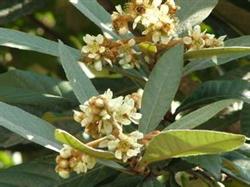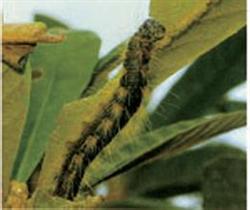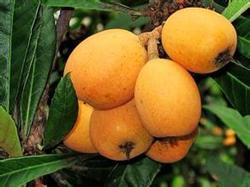High yield and good pre-flowering Fertilizer for Loquat

Loquat is a unique fruit tree in China. The yield of mature loquat per plant is 200 kilograms and 350 kilograms. The period from late July to late August is the time to promote flowers for strong shoots of loquat. Because the summer shoot is its main fruiting mother branch, after the summer shoot germinates, it is necessary to accelerate its robust maturity and make it a good fruiting mother branch. From the point of view of habit, the flower bud differentiation of loquat began in early August, and the application of pre-flowering fertilizer is an important measure to protect fruit and strive for a good harvest. For a long time, fruit farmers are used to fertilizing loquat in four times, namely, fruit picking fertilizer, strong flower fertilizer, fruit protection fertilizer and strong fruit fertilizer. Now in some places in the use of labor-saving cultivation, loquat pre-anthesis fertilizer (that is, strong flower fertilizer) should still be applied? According to the experience of high-yield orchards, in addition to fruit-picking fertilizer, pre-flowering fertilizer plays an important role in loquat fertilization, which can not be ignored. If the fertilizer is applied properly after fruit harvest and pre-flowering, it plays a significant role in improving yield and fruit quality. Loquat pre-flowering fertilizer has many functions, the first is to supplement the nutrients needed for flowering, because the tree has consumed more nutrients after summer shoot germination and flower bud differentiation from July to August; in addition, loquat has more flowers per panicle and florescence lasts for more than 4 months, and more nutrients are needed when flowering, so applying pre-flowering fertilizer is to supplement the nutrients needed for loquat flowering. Good application of pre-flowering fertilizer is beneficial to delay flowering. In southern loquat producing areas, loquat flowers and fruits in most places are subject to low temperature and frost, and flowers are more resistant to frost than young fruits. Therefore, the postponement of flowering is beneficial to avoid the harm of low temperature in the early stage, so that the late blooming flowers of loquat can increase the fruiting rate, so it can ensure a good harvest. The timely application of pre-flowering fertilizer can make the tree strong, the leaves dark green, and improve the frost resistance of fruit trees. Apply pre-flowering fertilizer to seize the most suitable time from early September to early October. The amount of fertilizer should account for about 20% of the total amount of fertilizer applied in the whole year. For the loquat orchard with biological mulch, because the mulch can provide a lot of organic matter and other fertilizer, and avoid Rain Water erosion, less fertility loss, so pre-flowering fertilizer urea and compound fertilizer can be applied. In the uncovered orchards, due to the diversion and loss of Rain Water's scouring fertilizer, in addition to the three elements of nitrogen, phosphorus and potassium, attention should also be paid to the application of organic fertilizer, potash and lime, generally 30,50kg of fence fertilizer per plant, 0.25kg of urea, 15kg of plant ash and 2.5kg of calcium magnesium phosphate fertilizer. In addition, for those red soil orchards with high stickiness and pH below 4.5, the amount of lime can be increased by 2 to 2.5 kg per plant, which can neutralize the acidity, avoid the deficiency caused by calcium deficiency, and improve the quality of flowers. Extra-root topdressing plays a significant role in replenishing nutrition. One of the most effective is to spray 0.3% 0.5% urea or 10% human urine. If it can be sprayed 5 times or 6 times, the effect will be better. In addition, 0.3% potassium dihydrogen phosphate solution, or 0.2% potassium sulfate solution or 0.3% calcium superphosphate leaching solution, or 10% plant ash leaching solution can be sprayed to supplement tree nutrition. Improve the ability of freezing resistance and cold resistance. Paclobutrazol can be used to control shoot and promote flowering in some orchards with only long shoots but no flowering, or fruitless orchards after flowering. The application methods are soil application or crown spraying, and the soil application is selected in October. According to the projection area of the crown, the effective content of paclobutrazol per square meter is 0.6-0.8 grams, which can control the shoot and promote the flower.
- Prev

How to strengthen the management of loquat in winter
Loquat yellow caterpillar MelanographiaflexilineataHampson, also known as tumor moth, belongs to Lepidoptera, Noctuidae. It is distributed in Nanjing, Anhui, Jiangxi, Hubei, Sichuan, Taiwan, Hainan, Guangdong, Guangxi and other producing areas in China. In addition to harming loquat, it also harms Baige, jackfruit and other plants. The characteristics of the harm.
- Next

Loquat application of heat preservation and fruit fertility is at the right time
Loquat is the earliest fruit variety to ripen in a year. High-quality loquat fruit big, nuclear less, orange skin color clean bright, soft and juicy pulp, sweet and sour moderate, unique flavor, rich nutrition, have heat, lungs, cough, stomach and other effects. In recent years, high-quality loquat quietly entered the high-end fruit market, not only the price...
Related
- Moge, come on! The staff of the peasant association in the producing area of cantaloupe were frightened when the crowd gathered.
- Causes and Solutions of low Fruit setting rate of Apple
- Symptoms and control measures of passion fruit virus disease
- Fruit growing lesson: how do apple orchards keep high yields?
- Can you build orchards in the mountains? What are the pros and cons?
- How to manage the coloring period of Crisson grape?
- This paper introduces the processing technology of two kinds of fig products.
- How much is a month for retired teachers in rural areas by 2020?
- How can strawberry planting increase sugar content? We should pay attention to management in many aspects.
- What are the cultivation techniques on how to improve the yield of golden fruit?

